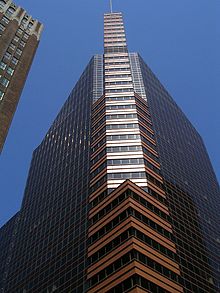
Back Administración de Transporte de Maryland Spanish Maryland Transit Administration French Maryland Transit Administration Portuguese میری لینڈ ٹرانزٹ ایڈمنسٹریشن Urdu
This article needs to be updated. (July 2015) |
| Maryland Transit Administration | |
|---|---|
 | |
 MTA's headquarters at the William Donald Schaefer Building in Baltimore | |
| Overview | |
| Locale | Washington-Baltimore metropolitan area |
| Transit type | Bus, Light rail, Rapid transit, Commuter rail |
| Number of lines | Heavy rail: 1 Light rail: 3 Commuter rail: 3 Bus: 80 |
| Number of stations | Heavy rail: 14 Light rail: 33 Commuter rail: 43[1] |
| Daily ridership | 186,900 (weekdays, Q1 2024)[2] |
| Annual ridership | 52,922,000 (2023)[3] |
| Chief executive | Holly Arnold[4] |
| Website | mta.maryland.gov |
| Operation | |
| Began operation | April 30, 1970 |
| Operator(s) | Maryland Department of Transportation |
| Number of vehicles | Heavy Rail: 100 Light Rail: 53 Commuter rail: 175 Bus: 842 Mobility vans: 303 Mobility sedans: 124 (2010)[5] |
| Technical | |
| System length | Heavy rail: 15.2 miles (24.5 km) Light rail: 30 miles (48 km) Commuter rail: 187 miles (301 km) |
| Track gauge | 4 ft 8+1⁄2 in (1,435 mm) standard gauge |
The Maryland Transit Administration (MTA) is a state-operated mass transit administration in Maryland, and is part of the Maryland Department of Transportation. The MTA operates a comprehensive transit system throughout the Washington-Baltimore metropolitan area. There are 80 bus lines serving the Baltimore Metropolitan Area, along with rail services that include the Light Rail, Metro Subway, and MARC Train. In 2023, the system had a ridership of 52,922,000, or about 186,900 per weekday as of the first quarter of 2024.
With nearly half of Baltimore residents lacking access to a car,[6] the MTA is an important part of the regional transit picture. The system has many connections to other transit agencies of Central Maryland, Washington, D.C., Northern Virginia, and south-central Pennsylvania (Hanover, Harrisburg, and York): WMATA, Charm City Circulator, Regional Transportation Agency of Central Maryland, Annapolis Transit, Rabbit Transit, Ride-On, and TransIT.
- ^ 2009 Annual Report Archived November 9, 2010, at the Wayback Machine. Maryland Transit Administration. Retrieved September 1, 2010
- ^ "Transit Ridership Report Fourth Quarter 2023" (PDF). American Public Transportation Association. March 4, 2024. Retrieved March 14, 2024.
- ^ "Transit Ridership Report First Quarter 2024" (PDF). American Public Transportation Association. May 23, 2024. Retrieved May 31, 2024.
- ^ "About us". Maryland Transit.
- ^ [1]. Maryland Transit Administration. Retrieved June 27, 2012
- ^ Dunn, Shannon. "SUSTAINABLE CITY, Shifting Gears: Safer Cycling in Baltimore". Urbanite Magazine. Archived from the original on August 29, 2007. Retrieved August 2, 2007.